Facade tiles: varieties and recommendations for choosing
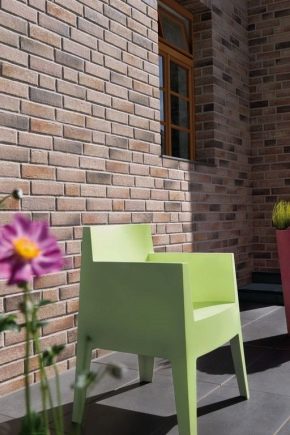
Residential private houses and commercial buildings faced with façade tiles look modern and attractive. In addition to its attractive appearance, this finish has many practical advantages. Let's get to know them in detail.
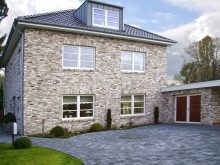
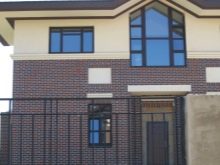
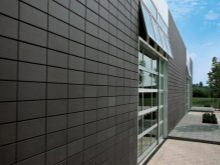
Features: advantages and disadvantages
Particularly durable types of ceramic products are used for cladding the facade of the building. It is they who have special characteristics that endow the tiles with super strength, the ability to withstand any load-bearing loads. Let's consider in more detail the advantages and disadvantages of facade tiles.
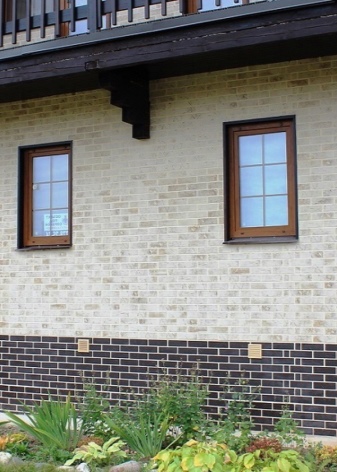
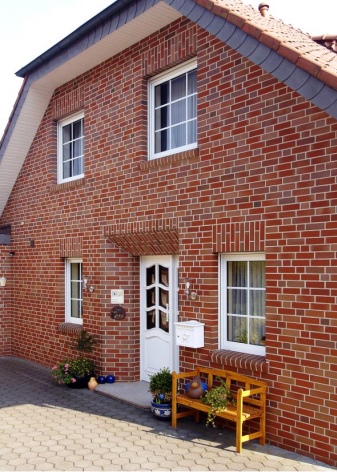
The undoubted advantages of such a facing material include:
- Frost resistance. This is an important quality for a material intended for outdoor use. Frequent temperature changes, constant freezing and thawing should not affect the quality and appearance of the product. In order to correctly choose a facade tile, you need to pay attention to the frost resistance indicator on the label or box of the product. It is designated by a conventional image of a snowflake. The higher the value of frost resistance, the more preferable to choose a product with a predominance of cold, harsh winters.
- Strength. The material is manufactured using strong pressing and firing (at a temperature of about 1200 degrees), thanks to which each product has super-strong characteristics, resistant to mechanical stress.
- Durability. The low level of wear allows the facade tiles to serve for many years without losing their decorative and utilitarian qualities.
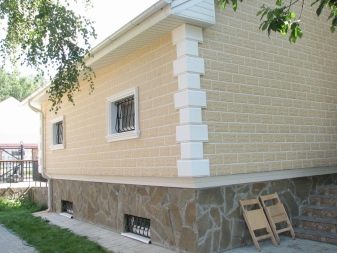
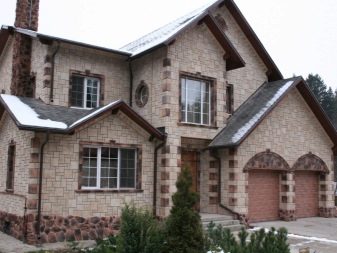
- Easy to care for. The façade clad with ceramics is very easy and convenient to clean. Such a surface is not afraid of chemicals.
- Installation work can be done independentlyit is enough to have a little experience in this area.
- A tiled building retains heat better while the material is considered "breathable".
- Environmentally friendly products do not harm human health, do not ignite and do not support combustion.
- For finishing the facade of the building with tiles no wall alignment work required, this type of cladding will hide irregularities and imperfections.
- Manufacturers offer a huge number of design solutions for facades, so everyone can choose the right option. The tiles can be combined with other finishing methods such as plaster.
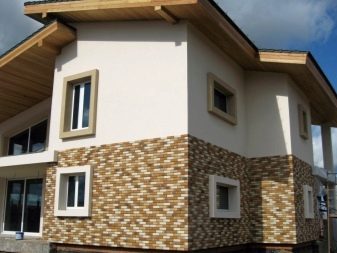

The disadvantages of this type of finishing material are insignificant compared to the obvious advantages. It is important to be able to choose the right material, taking into account the characteristics indicated on the packaging, as well as the climate of the area, to correctly choose the accompanying materials, such as glue or frame structures.
- Water absorption. Ceramic is a low porosity material, but it absorbs moisture. Freezing, the liquid accumulated in the pores expands, thereby slowly destroying the texture of the product. Thus, the lower the porosity, the longer the attractive appearance of the building façade will remain. An indicator of 3% is considered the norm, however, clinker tiles or porcelain stoneware have an even lower value.
- Large-format tiles, due to their weight and low adhesive properties, require special installation on frame structures with metal fasteners.Such a system allows you to arrange additional ventilation of the wall, as well as to lay a layer of insulation. Small-sized products are attached to special frost and moisture resistant glue for outdoor use. According to GOST, the technical characteristics of tile adhesive include strength, density, shrinkage level, viscosity, drying rate, plasticity. The use of a cement mixture is unacceptable for outdoor work, since it does not have all the necessary qualities.
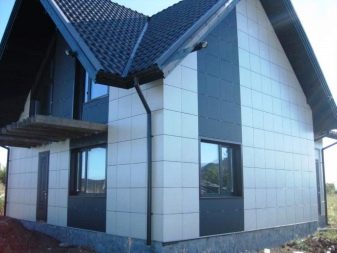
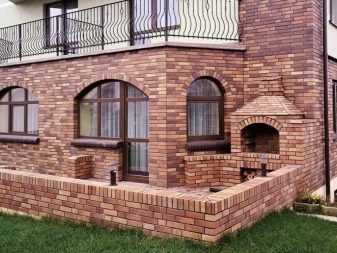
Varieties
A wide range of facade tiles gives everyone the opportunity to ennoble their homes, taking into account individual tastes, climatic conditions of the area, as well as budgetary possibilities and stylistic ideas. Basically, products differ in the method of production, the raw materials used to create them, practical characteristics, shape, size, appearance and design. Consider all types of tiles for exterior decoration of buildings.
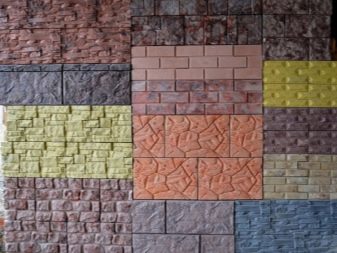
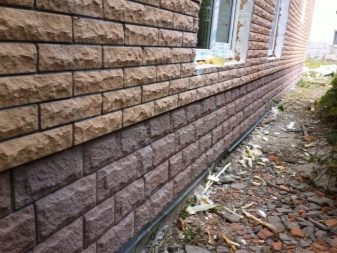
Natural stone
Natural materials are always highly valued. Such a noble finish indicates the status of the owner of the house, but also requires a serious investment. For facade cladding, marble or granite is most often used.
The texture of these types of stone has unlimited aesthetic value, has a number of utilitarian advantages:
- high degree of strength;
- frost resistance;
- does not undergo chemical reactions;
- safe for human health, as it does not contain harmful polyester resins;
- service life over 100 years.
The negative properties include the high cost of natural material. It is due to the high-tech method of stone extraction and its processing using special machines.
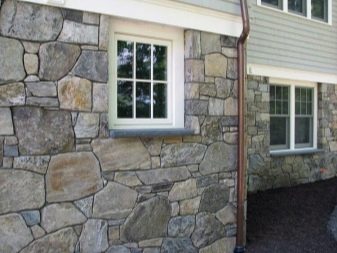

Shell rock
This type of finishing facade tiles also belongs to natural, natural materials. A type of special porous limestone is formed as a sediment that forms over millions of years at the bottom of water bodies. In Russia, there are large deposits of shell rock in the Crimea, where it is mined and supplied to the east and north of the country.
The material got its name due to its appearance. The texture of the slabs and blocks is porous, often in the layers of limestone there are real shells, which give a special zest to the decoration of the facades of buildings and the interior decoration of the premises. Unlike marble and granite, the price of shell rock is more affordable, so it is often used for cladding country houses.
A pleasant yellowish-brown color gives the structure a fresh look, and an unusual texture gives originality. Some architectural elements can be made from shell rock blocks, for example, support columns to decorate the entrance area.
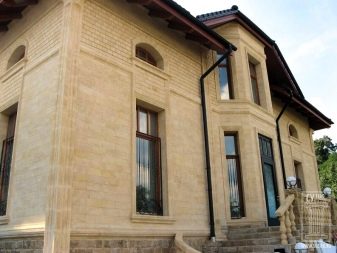
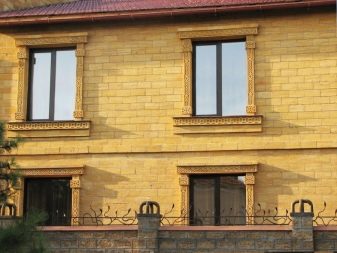
The density of the shell rock, as well as its endurance, can be different. To choose the required material, you need to know the appropriate product labeling;
- M35 - the densest type of shell rock. Blocks with such indicators are used for the construction of foundations, basements. They are distinguished by high strength, but also by weight.
- M25 - the most popular type of material used in construction. Despite the reduced density, it is possible to build a one- or two-story house from blocks marked M25, to erect interior partitions in a multi-storey building.
- M15 Is the most porous material. It is used for the construction of fences and single-level buildings.
Due to its low weight, the shell cladding of the facade does not exert strong pressure on the foundation and load-bearing supports. Often, whole blocks are brought in for cladding a house, which are already sawn on site and processed for installation. The finished product can be presented in the form of slabs or in the form of bricks.
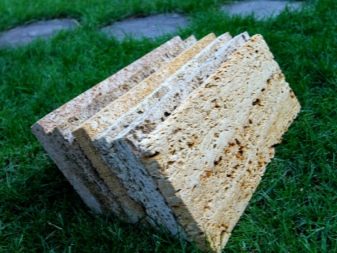
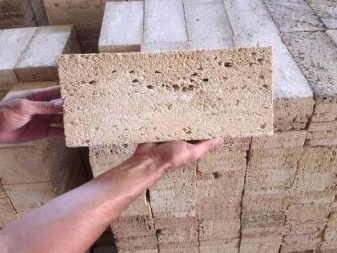
Advantages of shell rock slabs:
- porous material gives excellent adhesion to the base of the wall;
- thanks to its porosity, the finish perfectly retains heat and allows the house to "breathe";
- has high soundproofing qualities;
- environmentally friendly material does not affect human health;
- attractive decorative properties;
- relatively low price compared to granite and marble.

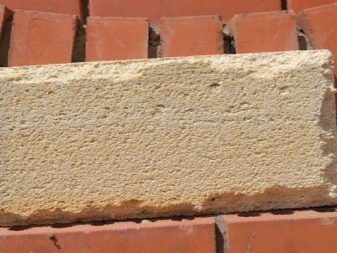
Disadvantages:
- The material is prone to absorbing moisture, which will certainly affect the service life of such a finish. To slow down the process of destruction of shell rock, it is treated with special water repellents, thanks to which the finish will serve for more than a dozen years.
- Installation of plates can only be carried out in clear warm weather; work is not allowed in frosty seasons and in extreme heat.
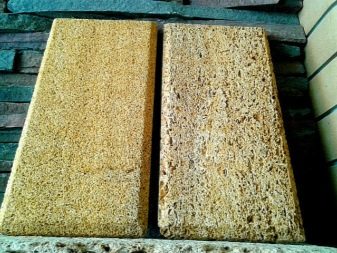
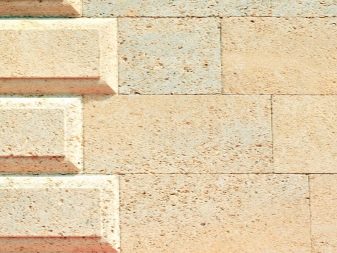
Sandstone
For facades, modular slabs are used, which can be cut into the correct geometric shape or represent a free figure with ragged edges. This difference only affects the appearance of the facade. The first option is more strict, the second is original, fantasy.
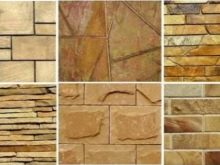


Sandstone, like shell rock, is a natural stone. It can be more dense, or it can be porous. For finishing the facade of the building, it is preferable to choose denser samples. In order not to be mistaken with the choice, you need to knock on the stone: if the sound is dull, you have a porous material in front of you.
Most likely, such a finish will quickly begin to crumble, since water will linger in the pores after rain, and temperature drops will accelerate the destruction process. It is better not to choose sand-colored models - they are flimsy and unreliable. Samples of gray and dark gray are suitable for finishing the facade.
If we talk about the practical properties of sandstone, then this finish allows the house to "breathe", is well ventilated, while keeping warm. Sandstone is a relatively inexpensive material that is safe for human health.
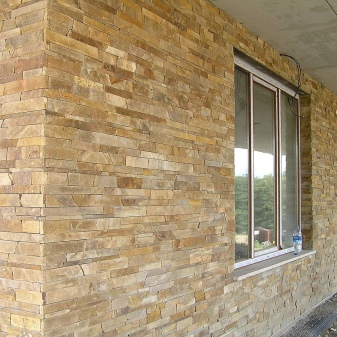

Porcelain stoneware
This type of finishing material for facades is made from granite chips, spar, quartz, expanded clay and binders. This mixture is subjected to strong pressing and high-temperature firing. Adapted to harsh weather conditions, the product is more durable than natural stone. In addition, the price of porcelain stoneware is much lower, which makes it one of the most popular materials for facades.
The following characteristics can be distinguished as features of the products:
- finished products are produced in a square or rectangular shape, the length of one side of the facade sample is usually 50–100 cm;
- even buildings with a wooden base can be decorated with porcelain stoneware;
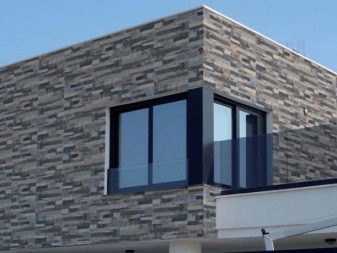
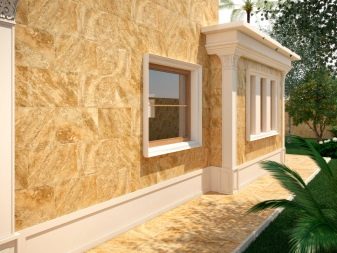
- most often this type of product is used for the installation of ventilated, hinged facades;
- the design of the material is diverse, among the various models you can find products of almost any color and texture;
- glazed surfaces of slabs with imitation of marble pattern will be an excellent alternative to natural stone, and will also help to create an exterior design in one of the modern styles - high-tech or minimalism;
- in general, the characteristics of porcelain stoneware are similar to natural slabs, however, the products are at an affordable price.
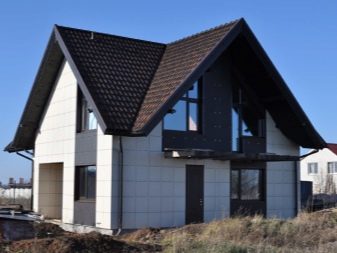

Clinker
Clinker tiles are produced from shale clays with admixtures of calcium carbonate, salts, chamotte, flux, fine promoter. Such a mixture has a high degree of refractoriness, which allows the facade finish to withstand any temperature changes. Micropores that appear in the texture of the product tend to repel water, which allows the finish to serve for a very long time (more than 50 years) and are not afraid of even the most severe frosts. Even porcelain stoneware cannot boast of such quality.
The finished product without dyes has a non-uniform color - from yellow to brown. At the same time, shades can vary greatly in different packages. Before starting installation work, all products should be mixed with each other, so that as a result the facade has an equally chaotic pattern on all sides. Sometimes manufacturers add dyes to help diversify the material palette.

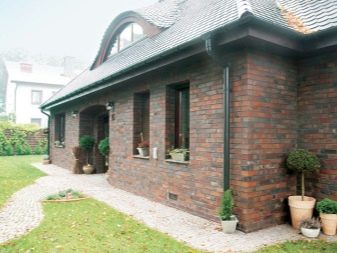
Due to the shape of the tiles, the facade cladding resembles brickwork. However, fulfilling an individual order, the manufacturer can make products of other parameters. After obtaining the required shape, the tiles are fired at extremely high temperatures, due to which the structure of the model becomes fine-grained.
Clinker tiles have gained their popularity due to a number of advantages:
- installation work is done quickly and does not require special skills;
- if necessary, it is easy to repair the facade or replace a part of the cladding;
- the tile is resistant to mechanical damage, has increased impact resistance;
- the product can be reused;
- the tile is easily mounted even on insulation;
- a large number of colors and textures allows you to choose the most suitable option.

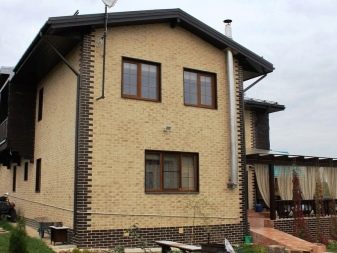
The varieties of clinker tiles include clinker thermal panels. Together with the facing material, a special insulation is purchased. The hot plate is presented in several systems. Insulation can be attached directly together with tiles like a constructor, when each element is inserted into a special groove and fixed to the base of the wall with dowel-umbrellas or self-tapping screws. Another option is when the insulation is first installed, and only then the tiles.
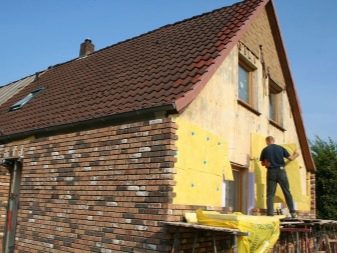
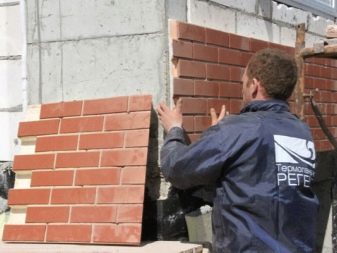
Agglomerate
This type of tile is obtained by pressing chips of marble, quartzite, granite. The strength and wear resistance of the agglomerate is given by quartz. These durable finishes are often used for cladding commercial buildings. According to its characteristics, the product is superior to marble or granite, while being much cheaper. There are models of agglomerate with imitation of the pattern of natural stones.
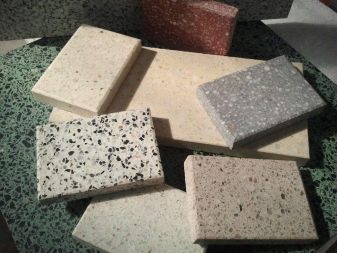
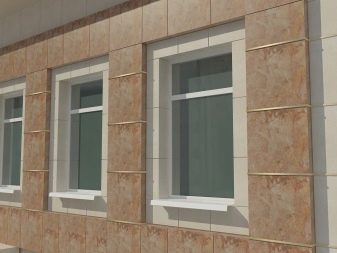
Terracotta
Terracotta tiles are made from chamotte kaolin clay. No pigments are added to the mixture, natural colors of the product: light brown, red-brown, black. Different models have different textures. Tiles can be imitating stone, brick and even wood imitation.
Unfortunately, such cladding is short-lived, peeling and crumbling over time. High levels of humidity and temperature drops are especially detrimental to terracotta tile facades. The product is more widely used in the interior decoration of fireplaces and architectural elements.
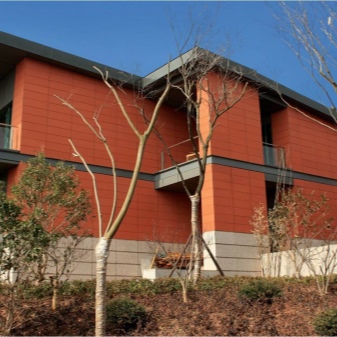
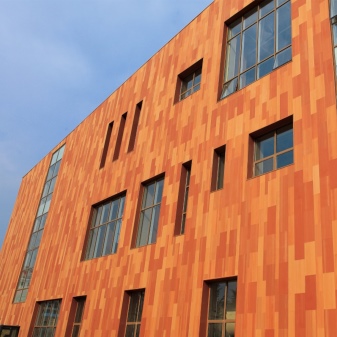
Concrete tiles
Decorative concrete tiles are lightweight thanks to the special lightweight aggregates in their composition. The basis of the mixture is sifted quartz sand, marble and granite chips.
In order for the characteristics of the finished product to meet all the necessary requirements, plasticizers, stabilizers and water-retaining additives are introduced into the composition.
Thanks to this recipe, a frost-resistant product with water-repellent properties is obtained, which is not afraid of mechanical damage and sudden temperature changes.
The decorative qualities of the tiles depend on the form into which the mixture is poured during production work, as well as the pigments and dyes that are part of the solution. Various shapes help to make concrete tiles that can imitate wood, natural stone, brick, be absolutely smooth or rough.


Making concrete tiles with your own hands is possible, however, is a laborious and time-consuming process.
When it comes to paving garden paths or, for example, for decorating steps in a garden or an entrance area, independent production is justified, but for the facade of a house it is better to purchase a finished product.
Concrete tiles are a popular finishing material due to their qualities:
- a small mass of products does not bear an excessive load on the foundation of the building;
- the tile resistant to mechanical damage protects the basement and facade of the building;
- special additives make products resistant to chemicals;
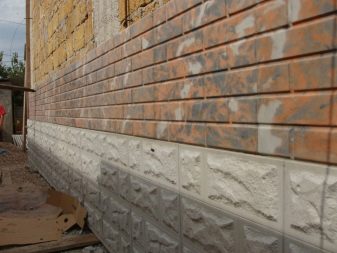
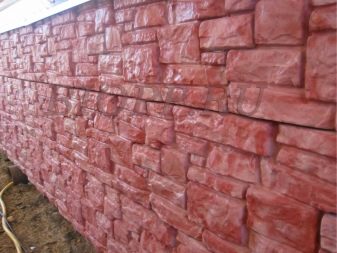
- not afraid of moisture;
- durability;
- low, affordable price.
The most common type of concrete tiles are the so-called artificial stone tiles. A facade with such a finish looks dignified and solid, and unlike natural stone cladding, it will come out to the owner much cheaper. And it will be easier to make partial repairs over time.
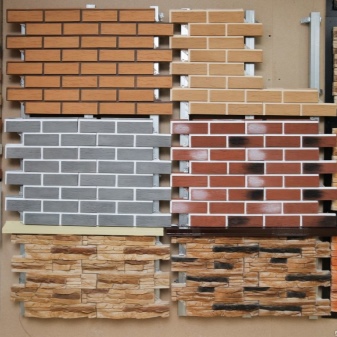
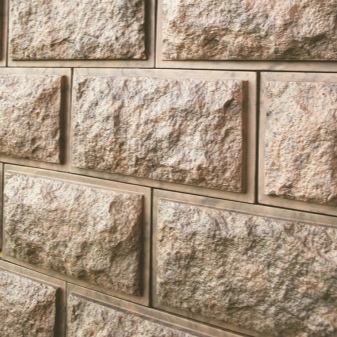
Natural stone is also imitated by gypsum tiles, but this material is more suitable for interior decoration, as it is afraid of severe frost and moisture. When buying, it is necessary to clarify the composition on the label or from the store's consultants in order to buy a suitable high-quality product that will last a long time. Polymer tiles are considered another alternative to natural stone, they are more durable and are not afraid of strong temperature changes, they will serve in any climatic conditions.
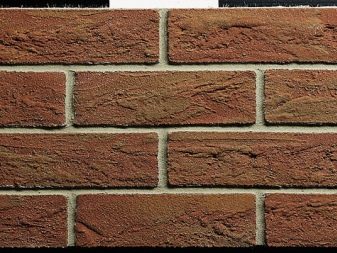
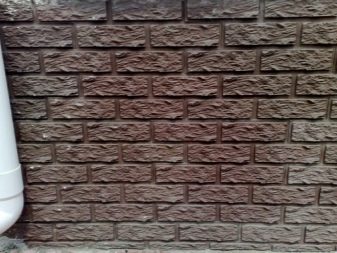
When choosing a color scheme, it should be borne in mind that a house, especially a two- or three-story cottage, is a rather big structure, in a small suburban area it will always be in sight. Too variegated colors on such an object can quickly get bored, they get tired of the eyes. Solid color options are more suitable for commercial buildings. Dark cold slabs are not the best option for an apartment building as they can create an overwhelming feeling.
So that the exterior design does not get bored and causes pleasant sensations, it is better to choose light, natural tones, to combine them with each other.
Dolomite
Dolomite in the construction industry is used both as an independent material and as a crumb, for example, for the manufacture of porcelain stoneware and even a cement mixture. Very hard rock has a pleasant beige-cream or gray color interspersed with small elements - "grains". Most often, dolomite tiles are polished, but for building facades, you can pick up polished, sawn, polished, antique or bush hammered models.
The main advantage of the finishing material is its strength, and its natural origin guarantees safety for human health. Dolomite tiles are an expensive material, but they work well with cheaper options such as sandstone or plaster.


Bituminous
Bituminous slabs are a young material. Tiles produced using a similar technology have already gained popularity among buyers who want to save money. The tile itself, during the installation process, gets an appearance that imitates brickwork, however, the installation is carried out in whole sections, with overlapping shingles, similar to tiles.
Each shingle is nailed with 8 nails. Installation starts from the bottom to avoid rain water entering the base of the wall.
Bituminous tiles are soft and flexible, therefore, during installation, a special adhesive composition may be required - an adhesive.
A facade faced with such a material will serve for at least 30 years. The surface of the walls will not fade in the sun, will not let moisture into the interior of the structure, and will be resistant to mechanical stress. Affordable price and ease of installation will help to save a considerable amount.
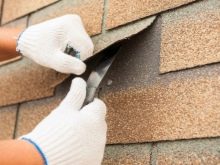
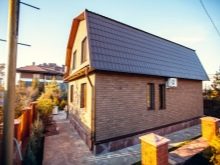
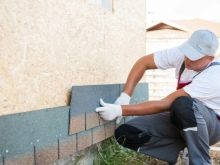
Design options
Facades faced with tiles made of unpolished natural stone or imitating natural materials have a rustic look. Natural irregularities and roughness, protrusions and depressions, colored overflows give depth and bulk to the building. This finish is well suited for estates made in a castle style, for Alpine chalets, English style mansions.
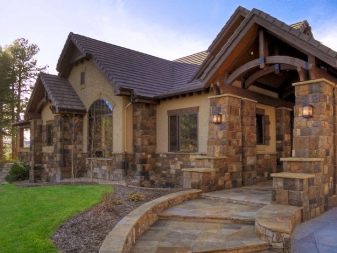
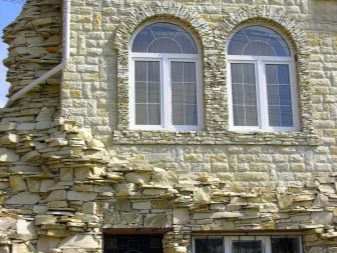
Often natural stone acts as a material that brings accents to the exterior of a suburban area, because it is in perfect harmony with other finishing methods. The best companion of sandstone and shell rock is plaster. In this combination, the nobility of the finish does not disappear, while there is an opportunity to save well.
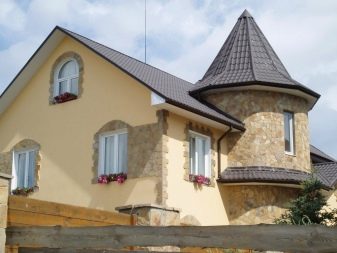

Porcelain stoneware is often used in the decoration of government buildings, commercial buildings, offices and shops. but cottages in the Scandinavian style, as well as hi-tech or minimalism, look best in facing from porcelain stoneware slabs. To create an original exterior design of the house, it is better to choose several types of models, for example, with a glossy and rough texture, as well as models that differ in color.
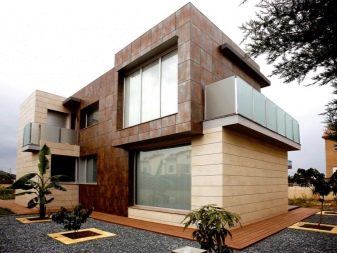

Due to the fact that clinker tiles are not uniform in color, the facade faced with it looks volumetric and original.
Ordinary brick trim is not capable of giving the exterior such a variety of color transitions and combinations. The clinker is in perfect harmony with natural and artificial stone, porcelain stoneware, dolomite and plaster. The color palette helps to greatly diversify the design options for the exterior. From cold gray Scandinavian facades to light, warm Mediterranean styles.
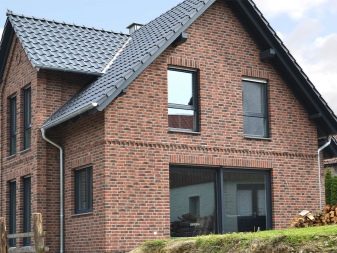
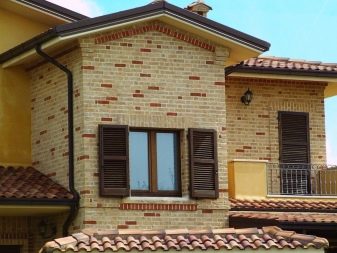
Selection Tips
- Faced with the question of how to veneer the facade of a country house, the first significant criterion that narrows the range of possible options is the final cost of products and installation work. If you have certain skills, you can save on workers and decorate the house with tiles yourself. A good saving item will be the use of products that are mined and processed in the host region. The absence of logistics costs, as well as the ability to purchase products directly from the factory, simplify the choice, save the wallet.
- Foreign companies (Italian, German, Spanish) offer high quality products. Often their products are produced in limited quantities. Because of this, the price of such a product will be significantly higher than that of domestic manufacturers.

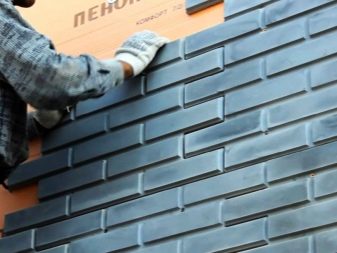
- Pay attention to the texture of the products. Relief models have a high degree of adhesion to the base of the wall. The textured facade of the building looks volumetric and original. However, dust accumulates on the protrusions and is difficult to remove. Smooth, glazed slabs create the impression of a flat surface, monolithic surface, it is easier to care for them, but more difficult to install, this requires a high degree of alignment at the building level.
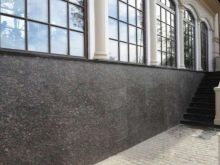
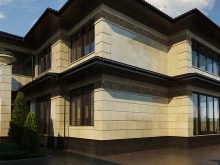
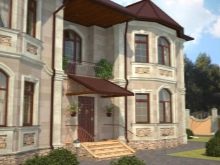
- Choosing a color scheme, it should be borne in mind that a house, especially a two- or three-story cottage, is a rather big structure, in a small suburban area it will always be in sight. Too variegated colors on such an object can quickly get bored, they get tired of the eyes. Solid color options are more suitable for commercial buildings. Dark cold slabs are not the best option for an apartment building as they can create an overwhelming feeling. So that the exterior design does not get bored and causes pleasant sensations, it is better to choose light, natural tones, to combine them with each other.
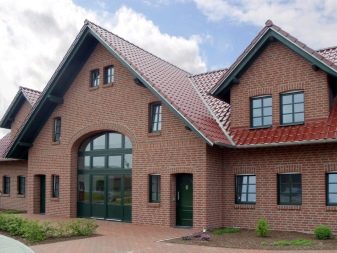

- When buying, it is imperative to check the integrity of each package., the presence on its surface of uncharacteristic streaks, delamination and swelling. Such signs may indicate non-compliance with the rules for storing the goods.
- Pay attention to all markingsindicated by the manufacturer on the packaging. Namely: frost resistance (not less than 50 cycles), ultimate strength in bending (not less than 180 MPa), water absorption (not more than 5%), material weight. Lightweight is easier to install, less likely to fall off, there is no strong impact on the foundation.
- Ask your consultant about the composition of the products, ask what real customer reviews were for this or that product.
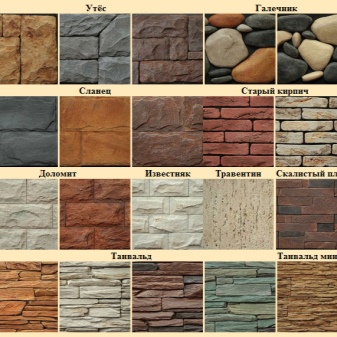
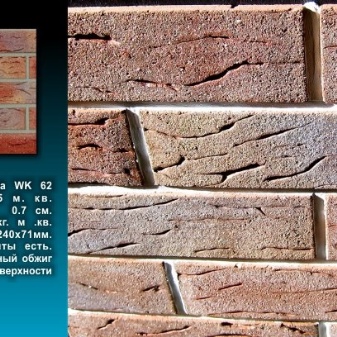
Subtleties of installation
There are two ways to install tiles:
- laying the elements on the base with glue, the so-called wet method;
- installation on the lathing, which is attached to the wall ("dry" method).
The first option is suitable for lightweight tiles that will cover a brick or foam block wall with a relatively flat surface.
For better adhesion of the material with the adhesive, the work is best done in the warm season.

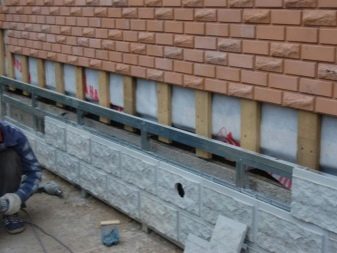
For wooden walls or buildings constructed using frame technology, use the "dry" method of installation. Clammer is a special holding device for tiles; it is attached to the crate with self-tapping screws, tiles are inserted into its grooves. This method allows you to carry out additional work on the insulation of the facade, as well as to make it ventilated. Large, heavy elements will be better fixed in this way.
Installation starts at the bottom corner of the wall and moves up and to the side. The seams between the tiles are rubbed, but if the technology is obvious with the tiles laid on the "wet" method, then during the installation "dry" there may be difficulties with the design of the corners of the structure.
Special aluminum or plastic outer corners for tiles and tile layouts will help you to correctly shape the outer or inner corner.
Such elements are placed with the holding side directly under the corner tile, while the rounded front part neatly covers the seam.

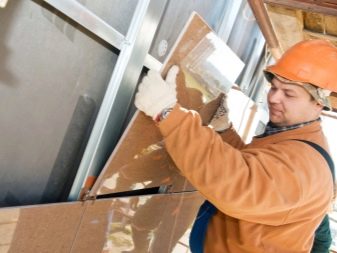
Beautiful examples
- The most interesting and unobtrusive exteriors of house facades are usually complex, consisting of several types of finishes, and have a rich palette. Finishes using white tiles will be considered a win-win option. This color gives a good contrast, refreshes the look, and can be used to embody any stylistic project: hi-tech, minimalism, Scandinavian, classic.
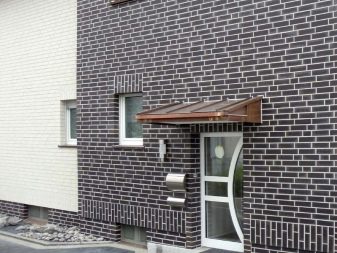

- Cozy and warm courtyards are obtained if any shades of red are used to decorate the facade - brick, terracotta, brown. Most often these are clinker tiles, but for a variety of textures, they are combined with slabs of natural stone, plaster, wood.
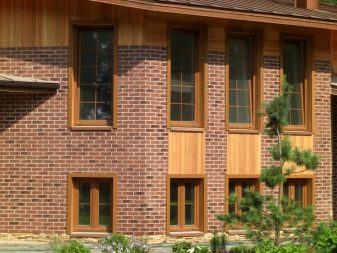

- Even elementary architectural forms look majestic if natural stone tiles have been chosen for their decoration. Due to the rich texture, natural color transition, the facade does not look dull and monotonous.


- When choosing large-format glazed tiles, for example, from natural marble, dolomite or porcelain stoneware, you should take into account the architectural features and the purpose of the building. House "boxes" finished with a material with a shiny surface can look official. For commercial buildings, such an appearance is acceptable, but for a residential building, such an exterior may look uncomfortable. Only unusual architectural solutions can be emphasized with expensive, exquisite finishes.
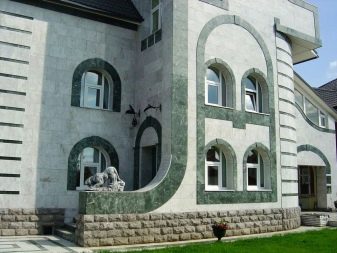
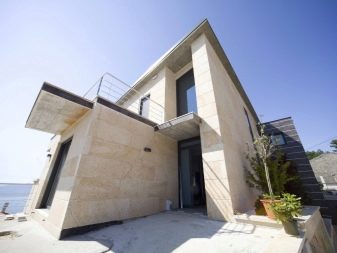
How the building is clad with decorative facade tiles, see the following video.













The comment was sent successfully.